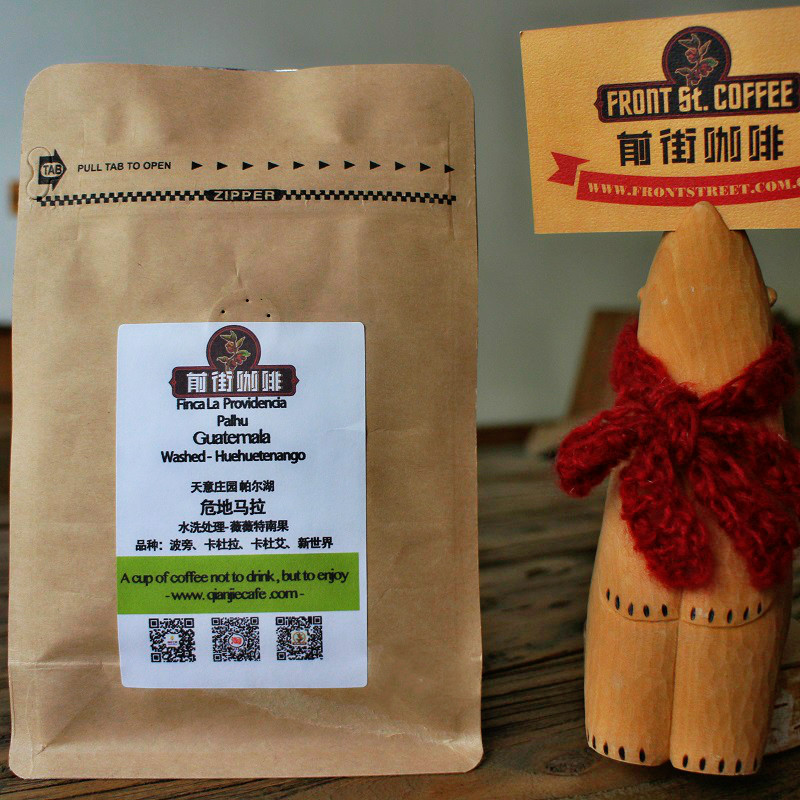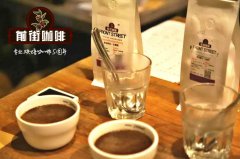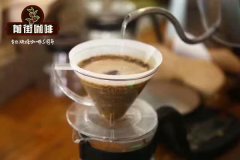Lake Parr, Vicki Nango Manor, Guatemala, Guatemala, is rich in fruit.

Professional coffee knowledge exchange more coffee bean information please follow the coffee workshop (Wechat official account cafe_style)
Country: Guatemala
Grade: SHB
Producing area: Vivette south fruit producing area
Manor: Finca La Providencia PALHU Manor
Variety: Bourbon bourbon, Caturra Kaddura, Mundo Novo New World
Altitude: average 1550 m
Grade: European water washed extremely hard beans SHB
Harvest time: October to February of the following year
Treatment: washing
Manor: Tianyi Manor, Lake Parr.
Flavor: fruit flavor, nut, stone fruit flavor, orange peel
In 1750, Father Jesuit introduced coffee trees to Guatemala (Guatemala)
The coffee industry here was developed by German colonists at the end of the 19th century.
Most small-scale producers are descended from the Mayan.
Today, most of the coffee industry's production takes place in the south of the country.
The slopes of SierraMadre volcano provide ideal conditions for growing high-quality coffee beans.
Finca La Providenci, Manor of providence, Guatemala
Cymbal
Guatemala Vivette South Fruit producing area introduction:
San Pedro Necta is a city in the Vivette Nanguo region of Guatemala, sometimes referred to as Vivette Nanguo, abbreviated as HHT, which can be said to be one of the most famous coffee producing areas in Guatemala. The altitude of this area is high, because the temperature is lower, the harvest season is relatively late, but the coffee quality is better. The region borders the Chiapas region of Mexico and is more remote and inconvenient than other coffee-producing areas in Guatemala, such as Acatenango and Antigua.
Guatemala is located in the Central American isthmus, many volcanoes in the formation of mountains and plateaus, Central America high altitude very hard coffee beans, for the world's ninth largest coffee producer. The country can be divided into eight major coffee producing areas-Antigua, Arcatel Nanguo, Attilan, St. Marcos, New Oriental, Koban, Farahannis and Vivette Nan Fruit, which is located in the north. Its peculiarity lies in sandy calcareous soil, while volcanic soil is common in Guatemala. Perhaps because of this, Vivette Nango Coffee has a fruity nutty aroma and obvious hierarchical changes, but also vaguely reveals a mineral flavor.
Vivette Nanguo is one of the excellent boutique coffee producing areas in Central and South America, mainly due to its unique geographical environment, fertile soil, abundant Rain Water, high-altitude mountain areas (2000 meters), steep slopes and special valley topography, the natural resources of each block are unique and changeable micro-climate (microclimate), so the coffee and flavor of different estates are different.
Guatemalan coffee is highly respected for its rich taste and cup test results. The country has many unique planting areas. Most of the coffee produced at high altitude is washed, with good acidity and complexity. Among them, the coffee beans of Antigua and Huehuetenango are of better quality. Vivette Nan fruit comes from the northern highlands, and its unique fruit flavor will never be confused with other coffees. Medium-baked Vivette Nan fruit with a hint of caramel, mild and sweet.
This is a typical blend of American coffee beans, including bourbon, Kaddura, Kaduai, and New World. Bourbon is the source of many coffee varieties and was first discovered on Reunion Island. When it was brought to America, its characteristics also changed. The hybrid variety Kaddura, which was first successfully planted in Brazil, has a shorter tree body and strong resistance to wind and rain. Another variety is New World (Mundo Novo), which is a hybrid of bourbon and iron pickup. Finally, there is Kaduai, a hybrid of the New World variety and Kaddura. The tree is short and chubby, and the yield is extremely high after proper fertilization.
Although leaf rust has ravaged the entire Central American coffee producing area, none of these varieties contain any genes from the Robusta variety, which is now more common than the Timor variety. But that's why the coffee tastes better here, and we've seen the region recover from what it used to be.
The first taste is not as shocking as that of Kenya, but as the temperature drops, it has a slight fragrance of lemon peel to make the taste more delicate, its classification is divided into seven grades according to altitude, and the taste is more mellow for those from the highlands (SHB / 1300 meters above). Located in the mountains of the Vivette Nan Fruit region in northwestern Guatemala, PALHU Manor is located in the Vivette Nan Fruit region famous for producing high-quality boutique coffee, which is the peak of Central America, coupled with volcanic soil, and is the winner of COE competitions in Guatemala's coffee industry.
It's fun to bake these beans from Guatemala. A total of two batches were baked, both of which were very delicious, demonstrating the quality of this coffee. By adjusting the firepower, the overall baking time of the first batch is one minute shorter than that of the second, while the dehydration time is slightly longer than that of the second. In this way, the time of Mena reaction and explosion is relatively short, making the fruit acid prominent. In the second batch of baking, I increased the baking time as a whole, but shortened the dehydration time and increased the firepower 32 seconds earlier, resulting in a longer Mena reaction and bursting time.
We use Bonavita Brewers to brew this Guatemalan. Brewing and cup testing are carried out at the same time. The people who took part in the test basically agreed and preferred the first batch of baked goods, that is, batch PR-644. The first batch of baking scored slightly higher, with sweet tangerine and light floral aromas, while the second batch highlighted the sweetness and mellow thickness of fudge.

End
Important Notice :
前街咖啡 FrontStreet Coffee has moved to new addredd:
FrontStreet Coffee Address: 315,Donghua East Road,GuangZhou
Tel:020 38364473
- Prev

Guatemala * Miracle Villa COE Vivetnango's representative work
Professional coffee knowledge exchange more coffee bean information please follow the coffee workshop (Wechat official account cafe_style) [Wonder Villa] Manor founder BenjaminMinchoVillatoro specializes in the production of special, refined coffee in 1970, he built Finca Miralvalle Wonder Villa in the mountains of tiny Nanguo. The manor covers an area of 30 hectares and is 1500 to 1900 meters above sea level
- Next

Introduction to Peruvian Organic Coffee Cooperatives in the North, Central and South of Peru
Professional coffee knowledge exchange more coffee bean information follow coffee workshop (Wechat official account cafe_style) Peru began to export coffee in 1887 and is now the eighth largest producer and the world's largest exporter of organic coffee, with an annual volume of 2 million bags, accounting for 5 per cent of total exports. More than 1/3 of the country's coffee is grown in the Cajamarca region in the north and in the south.
Related
- Detailed explanation of Jadeite planting Land in Panamanian Jadeite Manor introduction to the grading system of Jadeite competitive bidding, Red bid, Green bid and Rose Summer
- Story of Coffee planting in Brenka region of Costa Rica Stonehenge Manor anaerobic heavy honey treatment of flavor mouth
- What's on the barrel of Blue Mountain Coffee beans?
- Can American coffee also pull flowers? How to use hot American style to pull out a good-looking pattern?
- Can you make a cold extract with coffee beans? What is the right proportion for cold-extracted coffee formula?
- Indonesian PWN Gold Mandrine Coffee Origin Features Flavor How to Chong? Mandolin coffee is American.
- A brief introduction to the flavor characteristics of Brazilian yellow bourbon coffee beans
- What is the effect of different water quality on the flavor of cold-extracted coffee? What kind of water is best for brewing coffee?
- Why do you think of Rose Summer whenever you mention Panamanian coffee?
- Introduction to the characteristics of authentic blue mountain coffee bean producing areas? What is the CIB Coffee Authority in Jamaica?

